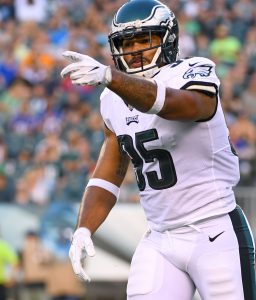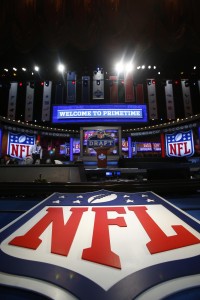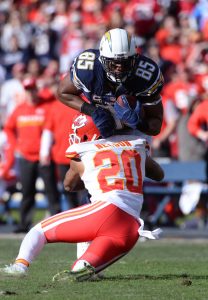NFL teams will often use bonuses in contracts as a way to spread out a cap hit that might otherwise be exorbitant. For instance, if a player’s five-year deal includes a $10MM signing bonus, that money can be paid immediately but spread out over five years for cap purposes. This way, the cap charge for the bonus amounts to $2MM per year for cap purposes, rather than $10MM in year one.
However, this practice can come back to haunt teams if they want to get out of a contract early. Suppose the team in the above scenario wanted to release the player in the third year of his contract. Even if none of the player’s base salary is guaranteed at that point, the team will still have to account for that remaining prorated bonus money. Rather than counting on the cap as $2MM per year for three seasons, that dead money “accelerates,” and applies to the cap for the league year in which the player is released. In other words, the remaining $6MM in prorated bonus money immediately counts against the club’s cap.
Although these rules apply to many cuts, a different set of rules is in place for players released after June 1. In that case, a team can spread the cap hit across two seasons rather than one — for the current season, the prorated bonus figure stays at its original amount, with the remaining bonus balance accelerating onto the following season. Referring again to the above scenario, that means the player would count against the cap for $2MM in the league year in which he was cut, with the remaining $4MM applying to the following league year.
The guidelines for pre-June 1 and post-June 1 cuts are fairly straightforward, but things become a little more complicated when we take into account that teams are allowed to designate up to two players as post-June 1 cuts even if those players are released before June. This offseason, we’ve seen a number of players designated as post-June 1 cuts, including Ndamukong Suh (Dolphins), Orlando Scandrick (Cowboys), Mychal Kendricks (Eagles), and Coby Fleener (Saints).
In the case of Kendricks, the Eagles were initially slated to pay him a $5.85MM in base salary this year with a $7.6MM cap figure. Under typical circumstances, the release would have left the Eagles with a $3.2MM dead money obligation for 2018. However, through the post-June 1 designation, they will unlock $6MM in cap space starting on Friday with just $1.6MM in dead money this year. In 2019, they’ll be faced with the remaining $1.6MM charge.
Because the cap charge for the current league year isn’t reduced until June, designating a player as a post-June 1 cut isn’t hugely advantageous for teams. By June, just about every notable free agent is off the board, so the new savings likely won’t be put toward a major move.
Still, releasing a player in March and designating him a post-June 1 cut can be mutually beneficial for a player and his team. It allows the player to hit the market when potential suitors still have cap room and are still looking to add free agents, and it allows the club to spread out the player’s cap charge without having to actually wait until June 1 to release him — waiting until that point could mean paying roster or workout bonuses in the interim. Additionally, even if the team doesn’t need that June cap space for free agency, it can come in handy for signing draft picks.
In the case of the defending champs, who faced a serious numbers crunch heading into the offseason, the June 1 designation allowed for some much-needed wiggle room. Before the move, the Eagles had an NFL-low $103K available under the cap.
A couple loose ends related to post-June 1 cuts:
- The same rules applying to players who are released apply to players who are traded — if a team trades a player after June 1, his remaining bonus money can be spread out over two seasons. However, a club can’t designate anyone traded prior to June as a post-June 1 player.
- Teams cannot designate post-June 1 cuts during the final league year of the Collective Bargaining Agreement.
Note: This is a PFR Glossary entry. Our glossary posts explain specific rules relating to free agency, trades, or other aspects of the NFL’s Collective Bargaining Agreement. Information from Over the Cap was used in the creation of this post. The original version of this post was published on April 2, 2014.





